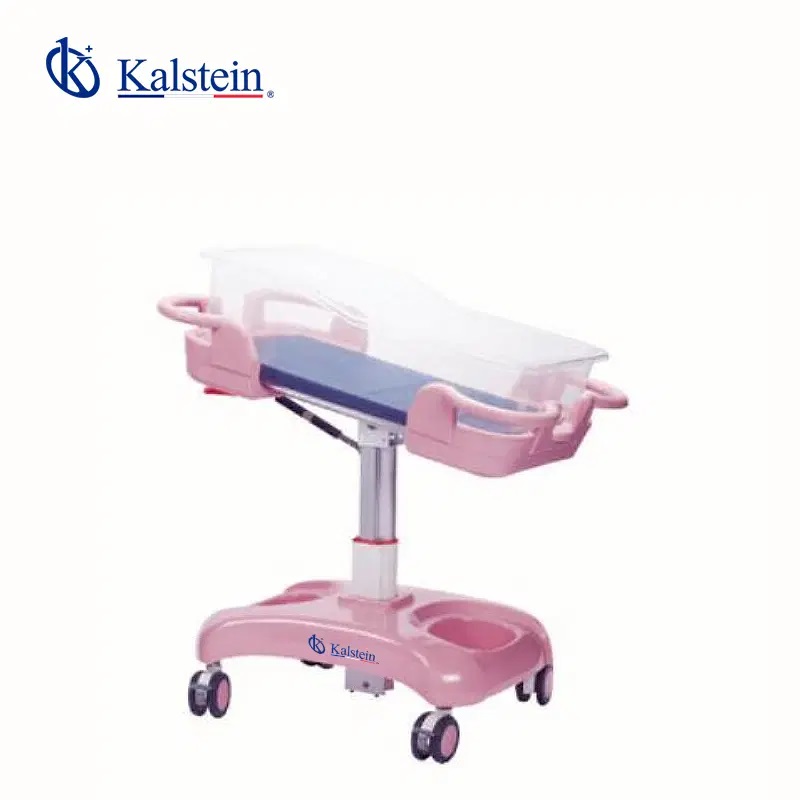The ABS Baby Crib from the medical line has become an indispensable tool for clinics and hospitals aiming to offer maximum comfort and safety for newborns.
This article provides a comprehensive guide on how to use this crib to achieve the best results, highlighting practical tips, step-by-step tutorials, and the latest trends in medical technology and recent advances in medical research.
We understand that you need equipment that delivers maximum value to your laboratory. We invite you to visit https://kalstein.de/category-product/medical-line/hospital-bed/, to immerse yourself in our universe of cutting-edge technology equipment. Our prices are competitive and accessible, we combine the convenience of online shopping with the guarantee of an exceptional product. Because you deserve the best, we create and offer top-tier laboratory equipment. Make your choice today, where science comes to life. https://kalstein.de/
Preparing the ABS Baby Crib: Initial Steps
Before using the ABS baby crib, it is essential to properly prepare the equipment to ensure the baby’s safety and comfort. Start by inspecting all parts of the crib, ensuring that there are no loose or damaged pieces. It is crucial to read the manufacturer’s instruction manual to familiarize yourself with all the functions and features of the equipment.
Once you are confident that the crib is in perfect condition, place it in a safe and accessible area within the neonatal room. Ensure that the crib is level and stable, adjusting the legs if necessary. The crib’s location should allow easy access for medical staff while providing a quiet and comfortable environment for the baby.
Configuration and Safety Adjustments: Ensuring a Safe Environment
Safety is a priority when it comes to newborn care. The ABS baby crib is equipped with several safety features that need to be correctly configured. Start by adjusting the crib’s side rails to prevent any risk of falls. The side rails should be securely fastened and in an upright position while the baby is in the crib.
Additionally, check that the mattress is properly positioned and that there are no gaps between the mattress and the crib edges. Use sheets and blankets that fit the mattress perfectly to avoid any risk of suffocation. Ensure all safety settings, such as the wheel brakes, are activated to prevent any unwanted movement of the crib.
Positioning the Baby: Techniques and Tips
Proper positioning of the baby in the crib is crucial for their well-being. Place the baby in a supine position (on their back) for sleeping, as this is the safest position to reduce the risk of sudden infant death syndrome (SIDS). Make sure the baby’s head is slightly elevated to facilitate breathing and prevent reflux.
Use baby positioners if necessary, but always with moderation and medical supervision. These devices can help keep the baby in a safe position, but it is important not to rely entirely on them. Regularly check on the baby to ensure they are comfortable and safe in the crib.
Maintenance and Cleaning: Keeping the Crib in Optimal Condition
Regular cleaning and maintenance of the ABS baby crib are essential to ensure a hygienic and safe environment. Clean the crib daily with non-toxic disinfectant products, paying special attention to high-contact areas. The mattress and sheets should be washed and disinfected regularly to prevent the buildup of bacteria and other pathogens.
Periodically inspect all moving and adjustable parts of the crib to ensure they function correctly. Lubricate moving parts if necessary and immediately replace any damaged components. Keeping the crib in excellent condition not only guarantees the baby’s safety but also extends the equipment’s lifespan.
Integrating the Crib into Neonatal Care: Best Practices
Integrating the ABS baby crib into neonatal care requires following best practices to maximize its benefits. Coordinate with the medical team to ensure all staff members are familiar with the crib’s use and features. Offer regular training sessions to update staff on any changes or improvements in the equipment.
Document and monitor the use of the crib in the baby’s daily care, recording any incidents or necessary adjustments. Use this information to continuously improve neonatal care practices and ensure the baby receives the best possible care. Effective collaboration and communication within the medical team are key to successful use of the ABS baby crib.
Innovations and the Future of ABS Baby Cribs: Latest Trends in Medical Technology
ABS baby cribs are constantly evolving thanks to advances in medical technology. The latest trends include integrating sensors and monitors that provide real-time data on the baby’s health and well-being. These devices can detect changes in temperature, heart rate, and breathing, alerting medical staff to any abnormalities.
The future of ABS baby cribs also includes the development of more sustainable and safe materials that reduce environmental impact and improve the equipment’s durability. Additionally, medical research continues to explore new ways to optimize crib design and functionality to provide an even safer and more comfortable environment for newborns.
Conclusion
The ABS baby crib from the medical line is an essential tool in neonatal care, providing a safe and comfortable environment for newborns. By following this comprehensive guide, healthcare professionals can maximize the benefits of this equipment, ensuring the baby’s safety and well-being.
From initial preparation and configuration to maintenance and the latest technological innovations, every aspect of using the ABS baby crib has been covered to offer a complete and practical reference.

